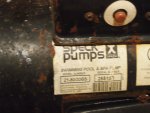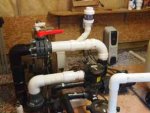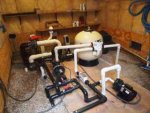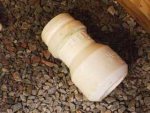- Oct 26, 2013
- 16
I have a 30K gallon inground plaster infinity edge pool that came with a home I purchased a year ago. The pool is currently plumbed with 3 single speed pumps that are about 6 years old. There is no skimmer in the pool (the IE acts as a skimmer)
The infinity edge runs on a 4HP pump that constantly sounds like it is cavitated.
The filter runs on a 1.5hp pump and there is a 3/4HP booster pump for a Polaris cleaner.
Each pump is on a timer. I have the filter pump set to run 6-8 hrs/day, the Polaris runs 3-4 hours/day and the Infinity Edge pump runs 20 minutes twice/day.
My electric bills have been enormous and I have been trying to see what the costs of running the pool pumps are and should be and trying to determine whether replacing the pumps will save me money.
I ran some quick calculations of costs to run based on my schedule and found the following:
Spillover (Infinity Edge) Pump: 230V X 19.4 amps = 4462W/1000 = 4.462 kW x .66 hr/day = 2.945 kWh/day X 30 day/mo X .10 dollars/kWh = $9/mo if running correctly (should run 4.46 kW per hour of running)
Filter Pump: 230V X 10.4 amps /1000 X 8 hr/day X 30 day/mo X .1 dollars/kWh =$57.40/mo (2.4 kW per hour of running)
Booster Pump: 115V X 13 amps /1000 X 4 hr/day X 30 day/mo X .1 dollars/kWh = $17.90/mo (1.5 kW per hour of running)
However, when I read the electric meter before and after running the spillover pump for 20 minutes it shows a burn of 5kWh in 20 minutes!
Not sure what is causing that or how it is happening without killing the circuit breaker but I am wondering if this could be wired incorrectly and is creating a false reading of usage? I think I did the calculations right.
My pool guy is recommending I replace all three pumps with an Intelliflo XF VS pump. I have no idea how to determine if this will even work with my system and I haven't seen him perform any calculations to show me if it would work and more importantly how much it would cost me to run in this configuration if it did work.
Any insights would be greatly appreciated - especially how the spillover pump appears to be burning so much power.
The infinity edge runs on a 4HP pump that constantly sounds like it is cavitated.
The filter runs on a 1.5hp pump and there is a 3/4HP booster pump for a Polaris cleaner.
Each pump is on a timer. I have the filter pump set to run 6-8 hrs/day, the Polaris runs 3-4 hours/day and the Infinity Edge pump runs 20 minutes twice/day.
My electric bills have been enormous and I have been trying to see what the costs of running the pool pumps are and should be and trying to determine whether replacing the pumps will save me money.
I ran some quick calculations of costs to run based on my schedule and found the following:
Spillover (Infinity Edge) Pump: 230V X 19.4 amps = 4462W/1000 = 4.462 kW x .66 hr/day = 2.945 kWh/day X 30 day/mo X .10 dollars/kWh = $9/mo if running correctly (should run 4.46 kW per hour of running)
Filter Pump: 230V X 10.4 amps /1000 X 8 hr/day X 30 day/mo X .1 dollars/kWh =$57.40/mo (2.4 kW per hour of running)
Booster Pump: 115V X 13 amps /1000 X 4 hr/day X 30 day/mo X .1 dollars/kWh = $17.90/mo (1.5 kW per hour of running)
However, when I read the electric meter before and after running the spillover pump for 20 minutes it shows a burn of 5kWh in 20 minutes!
Not sure what is causing that or how it is happening without killing the circuit breaker but I am wondering if this could be wired incorrectly and is creating a false reading of usage? I think I did the calculations right.
My pool guy is recommending I replace all three pumps with an Intelliflo XF VS pump. I have no idea how to determine if this will even work with my system and I haven't seen him perform any calculations to show me if it would work and more importantly how much it would cost me to run in this configuration if it did work.
Any insights would be greatly appreciated - especially how the spillover pump appears to be burning so much power.






